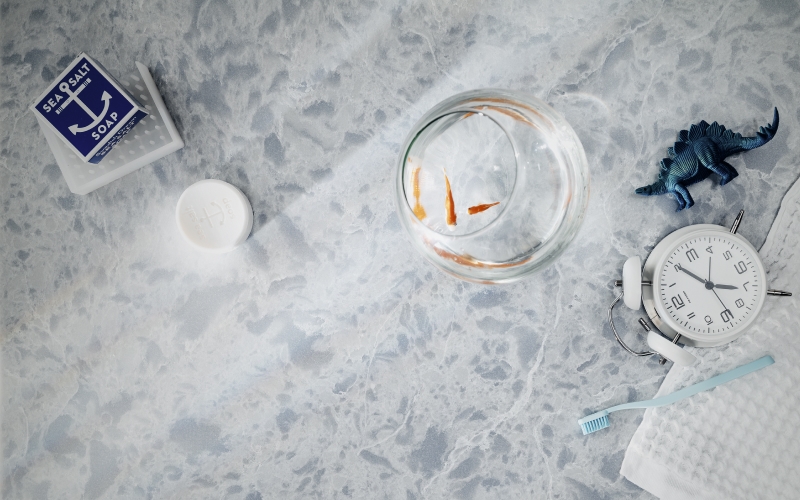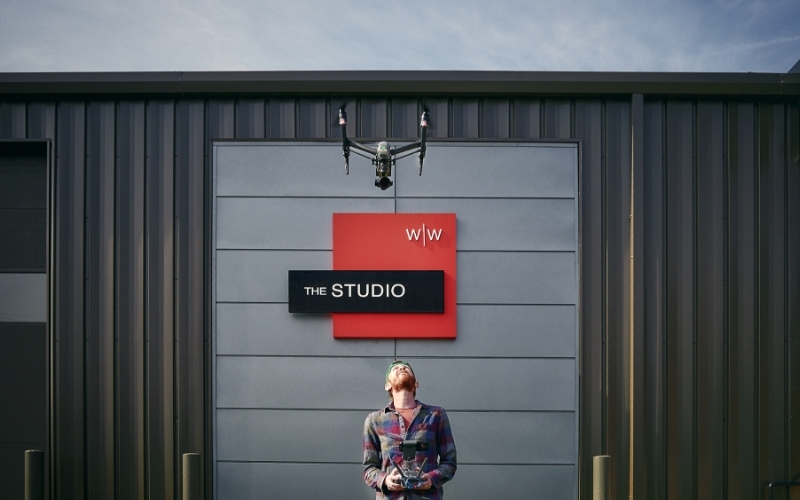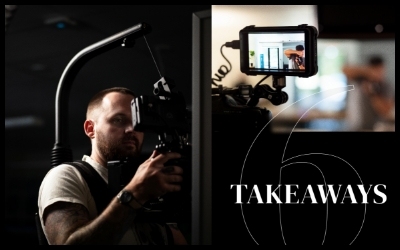Photography
Television and Video
Photography and video production are art forms, but they’re also complex processes that take a lot of planning and strategy to be successful.
By following these eight tips, you can help ensure strategies are aligned and your agency partner and production team are able to react quickly to changes and snags. As a result, your shoots will be quicker, smoother and more efficient, all of which translate to lower costs and a better end result.
- Agree on objectives upfront. We always start out with a mood board. Early in the process, we also talk with our clients about all end uses (from print ads to social media). This information will play a huge role in the type and look of photos or footage captured. Additionally, a good agency partner will also educate their client on how they will structure the shoot, and they will share their ultimate vision for the production. Finally, the last thing any creative team wants is to arrive on the set, meticulous plan and complete shot list in hand, only for someone to say, “Let’s shoot some other things while we’re here, too.” All of the details, from our shot list to rentals, talent and travel, are part of a carefully constructed symphony, where the musicians have to hit every last note, right on time. While we always incorporate extra time to account for the unexpected, this doesn’t allow for additional or changed shots.
- Make a solid plan together. Photography and video shoots are highly creative, fast-paced and fun. But they can also be stressful without careful, advance planning by both parties. Planning takes time — anywhere from 24 hours for a tabletop photo shoot to four to six months for a location shoot in another country. Because shoots occur during a fixed window of time and generally capture a staged environment or circumstance, planning allows everyone to leverage this time to its fullest potential. Additionally, many details are interconnected, so having a strong grasp of everything that must be accomplished will help minimize surprises and stresses on the day(s) of the shoot.
- Define roles and responsibilities in advance. Assigning roles on the fly? It’s never a good idea. It creates tension and confusion, and it hurts the final product. Who is handling what? What is the approval process? Who provides feedback to the photographer and/or stylist? Who makes selects after the shoot? Is there a process for retouching? Discussing these details will alleviate headaches before, during and after the shoot. As for who attends, we typically recommend that our clients bring only stakeholders with decision-making power to a shoot. For example, the photographer and stylist can’t get inconsistent feedback from three different people. We’ve found that it’s usually best to funnel all comments on the set from one spokesperson to the creative director. It’s also important to determine postproduction roles before we reach that stage. For example, will the client select all of the shots, or will the agency partner and/or production team handle the bulk of shot selections, retouching and proofing? These are all extremely time-consuming tasks, especially considering that many shoots can produce thousands of images, but it’s always something we’re happy to do.
- Be an active participant in creating the shot list. After we share mood boards, it’s time to develop the shot list. The shot list may include overall scenes, moments to capture within each scene, models in the scene, the wardrobe for each scene, time of day we are replicating in the scene, time of day to actually shoot, props, and so on. This is a perfect place for the client to share their knowledge and passion. Shot list time means all-hands-on-deck, from the client and their agency partner to the photographer and/or stylist. It’s critical to provide feedback at this juncture, because any changes that come later could mean giving up something or adding time to the shoot.
- Be the expert on your product or brand. You are the expert on your business. No matter how much a creative team immerses itself in your product or story, you are ultimately the one most likely to notice when your fabric is inside out or a cushion is sewn incorrectly. Always try to be available for questions from your agency team, especially when they need approval or buy-in to move forward.
- Embrace the unexpected at every turn. In one way, a shoot is like a wedding. Things don’t always go as planned, even if the plan is perfect. Sometimes perfect isn’t meant to be, even if all parties put all of their effort and energy into getting everything just right. We can’t always predict a crazy wind that keeps us from shooting a shade sail in the desert or a torrential, soaking rain on the open sea, but we can have a plan b. Good production crews always find a way around these would-be emergencies — and sometimes, things turn out even better than expected. We’ll get to amazing, but first we all have to help each other through what often become long days.
- Provide constructive feedback. It’s critical that stakeholders know how to provide feedback. In general, this means sharing feedback that is objective in nature. For example, if you feel your product is not portrayed in the best possible light, we want to know right away. Descriptive feedback is important, too. For example, rather than saying, “I just don’t like that vase,” say, “I think that vase detracts from our product.” We like to be the filter for all feedback from our clients, because we are experienced at framing that feedback to production team members in such a way that it will get the result the client wants. Finally, remember that everyone thrives on positive reinforcement. When we are trying to motivate a 40-person crew to do their best work for sometimes many consecutive days, taking time to say, “Wow, this looks amazing,” can be just as helpful as alerting the team when something looks wrong.
- Trust your agency team to steer the ship. Steering the ship isn’t easy, but it’s part of our job to help you have a great experience and get the best possible end result for your brand. A good producer will always stay on top of the little details, from prop needs to weather conditions. And a good agency partner will know when to play it safe as well as when to take a giant leap.
At Wray Ward, our full-service motion and photography services tap into the talents of in-house photographers, videographers, animators, directors, producers and editors. This means our clients get everything they need without having to pay more expensive, a la carte prices to multiple partners. Need photography or video services? Contact us to talk about how we can help tell your story.


